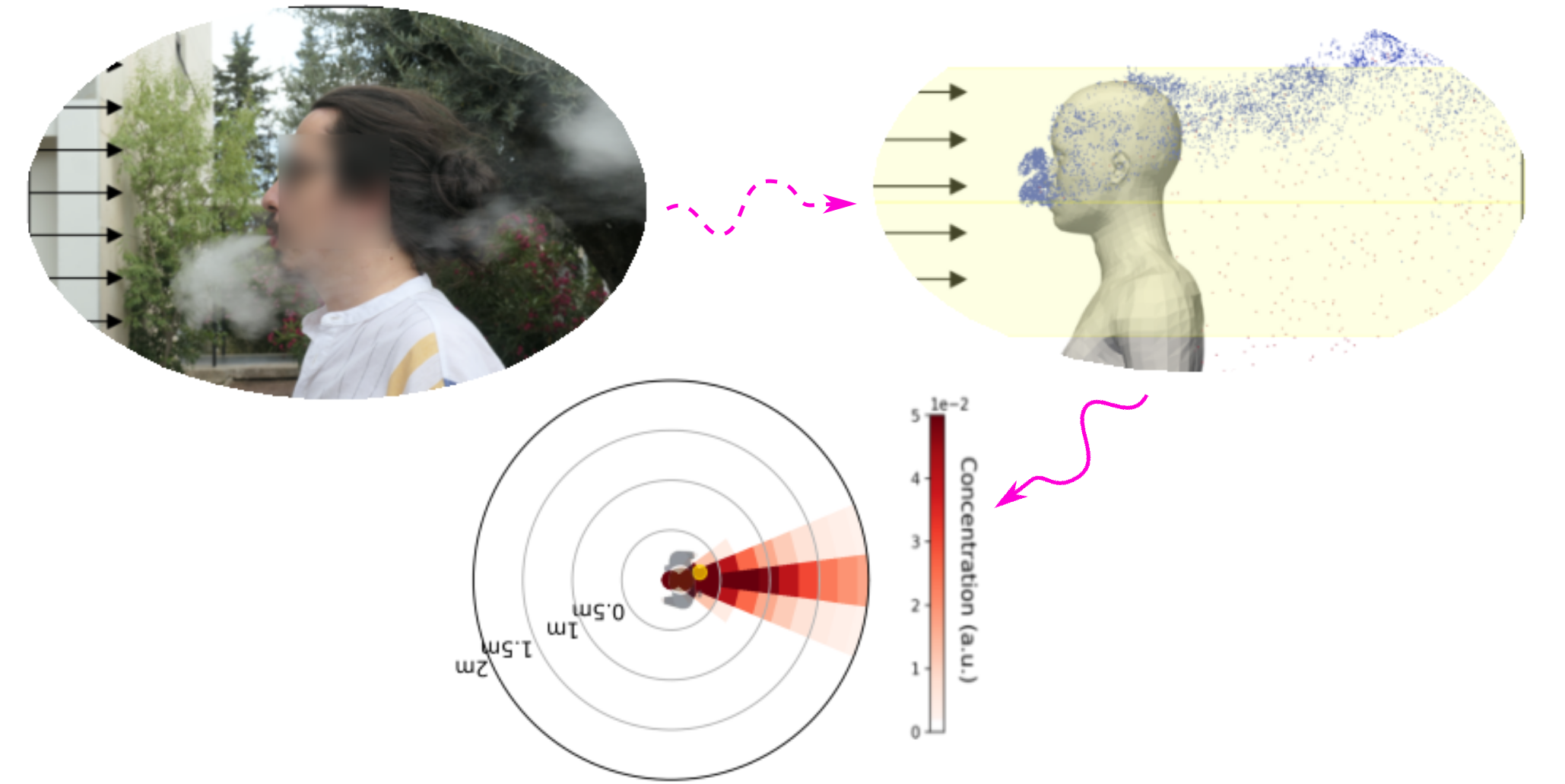Viral Transmission in Pedestrian Crowds: Coupling an Open-source Code Assessing the Risks of Airborne Contagion with Diverse Pedestrian Dynamics Models
DOI:
https://doi.org/10.17815/CD.2024.159Keywords:
Crowd dynamics, Epidemiology, agent based modelsAbstract
We study viral transmission in crowds via the short-ranged airborne pathway using a purely model-based approach.
Our goal is two-pronged. Firstly, we illustrate with a concrete and pedagogical case study how to estimate the risks of new viral infections by coupling pedestrian simulations with the transmission algorithm that we recently released as open-source code. The algorithm hinges on pre-computed viral concentration maps derived from computational fluid dynamics (CFD) simulations. Secondly, we investigate to what extent the transmission risk predictions depend on the pedestrian dynamics model in use. For the simple bidirectional flow under consideration, the predictions are found to be surprisingly stable across initial conditions and models, despite the different microscopic arrangements of the simulated crowd, as long as the crowd evolves in a qualitatively similarly way. On the other hand, when major changes are observed in the crowd's behaviour, notably whenever a jam occurs at the centre of the channel, the estimated risks surge drastically.
References
Harweg, T., Bachmann, D., Weichert, F.: Agent-based simulation of pedestrian dynamics for exposure time estimation in epidemic risk assessment. Journal of Public Health pp. 1-8 (2021)
Löhner, R., Antil, H., Srinivasan, A., Idelsohn, S., O nate, E.: High-fidelity simulation of pathogen propagation, transmission and mitigation in the built environment. Archives of Computational Methods in Engineering 28, 4237-4262 (2021)
Mendez, S., Garcia, W., Nicolas, A.: From microscopic droplets to macroscopic crowds: Crossing the scales in models of short-range respiratory disease transmission, with application to covid-19. Advanced Science 10(19), 2205255 (2023)
Wang, J., Alipour, M., Soligo, G., Roccon, A., De Paoli, M., Picano, F., Soldati, A.: Short-range exposure to airborne virus transmission and current guidelines. Proceedings of the National Academy of Sciences 118(37), e2105279118 (2021)
Abkarian, M., Mendez, S., Xue, N., Yang, F., Stone, H.A.: Speech can produce jet-like transport relevant to asymptomatic spreading of virus. Proceedings of the National Academy of Sciences 117(41), 25237-25245 (2020)
Garcia, W., Mendez, S., Fray, B., Nicolas, A.: Model-based assessment of the risks of viral transmission in non-confined crowds. Safety science 144, 105453 (2021)
van Toll, W., Grzeskowiak, F., Gandía, A.L., Amirian, J., Berton, F., Bruneau, J., Daniel, B.C., Jovane, A., Pettré, J.: Generalized microscropic crowd simulation using costs in velocity space. In: Symposium on Interactive 3D Graphics and Games, pp. 1-9 (2020)
Van den Berg, J., Lin, M., Manocha, D.: Reciprocal velocity obstacles for real-time multi-agent navigation. In: 2008 IEEE international conference on robotics and automation, pp. 1928-1935. Ieee (2008)
Van den Berg, J., Guy, S.J., Lin, M., Manocha, D.: Reciprocal n-body collision avoidance. In: Robotics research, pp. 3-19. Springer (2011)
Helbing, D., Molnar, P.: Social force model for pedestrian dynamics. Physical review E 51(5), 4282 (1995)
Karamouzas, I., Skinner, B., Guy, S.J.: Universal power law governing pedestrian interactions. Physical review letters 113(23), 238701 (2014)
Moussaïd, M., Helbing, D., Theraulaz, G.: How simple rules determine pedestrian behavior and crowd disasters. Proceedings of the National Academy of Sciences 108(17), 6884-6888 (2011)
Echeverría-Huarte, I., Nicolas, A.: Body and mind: Decoding the dynamics of pedestrians and the effect of smartphone distraction by coupling mechanical and decisional processes. Transportation research part C: emerging technologies 157, 104365 (2023)

Downloads
Published
How to Cite
Issue
Section
Categories
License
Copyright (c) 2024 Alexandre Nicolas, Simon Mendez

This work is licensed under a Creative Commons Attribution 4.0 International License.
Authors contributing to Collective Dynamics agree to publish their articles under the Creative Commons Attribution 4.0 license.
This license allows:
Share — copy and redistribute the material in any medium or format
Adapt — remix, transform, and build upon the material
for any purpose, even commercially.
The licensor cannot revoke these freedoms as long as you follow the license terms.
Authors retain copyright of their work. They are permitted and encouraged to post items submitted to Collective Dynamics on personal or institutional websites and repositories, prior to and after publication (while providing the bibliographic details of that publication).








